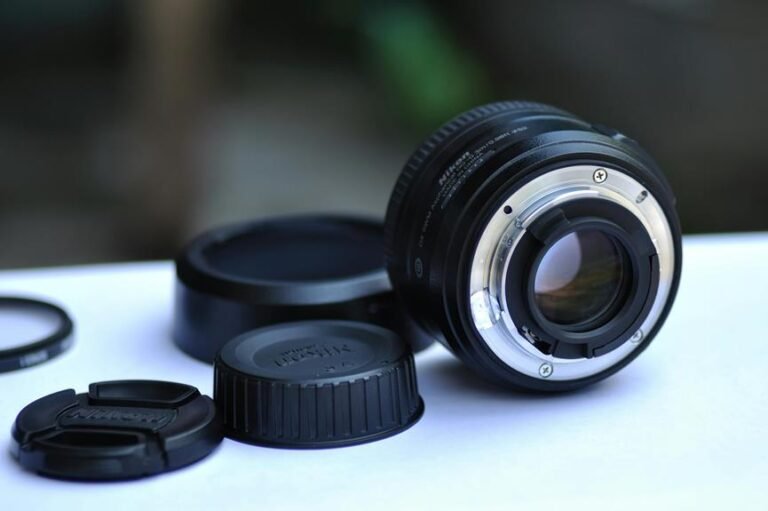How Far Does a Ring Camera See: Camera Field of View Explained
With a typical field of view ranging from 115 to 155 degrees, a Ring camera provides an expansive perspective for thorough surveillance coverage. This broad view allows you to monitor a wide area, capturing more detail and potential threats. Additionally, the camera's night vision feature guarantees visibility in low light conditions, boosting security round the clock. Understanding the camera's field of view is essential for optimizing its positioning and maximizing surveillance effectiveness.
A Quick Overview
- Camera field of view dictates the extent of what is visible to the camera.
- Zoom capabilities enable focusing on specific areas within the field of view.
- Knowing camera angles aids in tailoring surveillance setup effectively.
- Strategic positioning can expand the camera's coverage range.
- Lighting conditions play a crucial role in visibility and image quality, influencing the camera's viewing distance.
Understanding Camera Field of View
Imagine the camera field of view as the angle that dictates what your camera can see. The camera angle plays a crucial role in determining the extent of your surroundings that will be captured.
By utilizing zoom features, you can zero in on particular areas within this field. Having a good grasp of these functionalities allows you to customize your surveillance setup to meet your requirements efficiently.
Take advantage of the ability to dictate what your camera captures and how it captures it.
Factors Influencing Camera Range
When discussing camera range, the proximity of the camera to the subject is a crucial element that significantly affects the level of detail and clarity captured in the video.
Furthermore, the camera's angle is a key determinant of the coverage area. Strategic placement can increase the camera's range.
Moreover, lighting conditions play a vital role in visibility and image quality. Good lighting enhances the camera's functionality, resulting in sharper footage.
Exploring Ring Camera Coverage Area
Understanding the coverage area of a Ring camera offers valuable insights into its surveillance capabilities and effectiveness in monitoring your surroundings.
The camera's night vision feature ensures visibility even in low light conditions, extending its reach to a specific distance.
By regularly monitoring blind spots and adjusting camera angles, you can enhance the coverage area and gain a comprehensive view of your property.
These practices optimize the camera's performance in safeguarding your home and ensuring thorough surveillance.
Optimizing Camera Placement for Visibility
Optimizing the placement of your Ring camera is essential for maximizing visibility and enhancing surveillance efficiency. Ensure that your camera angles cover entry points and vulnerable areas, while avoiding obstructions that may block the line of sight, such as trees or walls.
Position the camera at an optimal height to capture clear images effectively. By strategically placing your camera, you can enhance surveillance coverage and improve the overall effectiveness of your security system.
Maximizing Surveillance Range Indoors
Positioning your camera strategically indoors is crucial for maximizing surveillance range. Ensure that it covers key areas effectively, has a clear line of sight, and isn't obstructed by objects.
This will enable peak remote monitoring while also addressing privacy concerns. Thoughtfully placing the camera can help achieve a broader coverage area and enhance indoor security without compromising on privacy.
Extending Camera Sight Outdoors
To improve outdoor surveillance, it's important to strategically reposition your cameras to optimize their viewing range. Proper camera placement is essential for maximizing coverage and monitoring key areas effectively.
Ensure that your cameras have unobstructed views and are located at strategic vantage points to oversee entrances, driveways, and other high-risk areas.
Enhancing Security With Camera Field of View
Strategically repositioning your cameras can significantly improve security by optimizing their field of view to effectively monitor critical areas. Adjusting the angle and height of your cameras allows you to address privacy concerns while ensuring comprehensive coverage.
Take into account lighting conditions when positioning cameras to prevent glare and shadows that could affect visibility. Improve your security system by carefully adjusting camera positions for broad coverage while maintaining privacy and clear visibility.
Frequently Asked Questions
Can a Ring Camera See Through Windows or Glass Doors?
Yes, a Ring camera can see through windows or glass doors. However, keep in mind that window reflection and glass distortion might affect the clarity of the footage. Experiment with camera placement for best results.
How Does the Camera's Field of View Affect Night Vision Capabilities?
When the camera's field of view is narrow, night vision range may be limited due to obstacles like walls. Infrared technology helps, but its effectiveness decreases with distance. Consider positioning your camera strategically for best night vision results.
Will Extreme Weather Conditions Impact the Camera's Range?
In extreme weather conditions, the camera's range might be impacted. Harsh weather can affect camera performance, limiting its visibility. Maintain and place your camera properly to optimize its performance regardless of the weather challenges it faces.
Can the Camera Detect Motion Through Foliage or Trees?
In dense foliage or behind trees, the motion sensor on your Ring Camera may encounter obstructions that affect its detection capabilities. Keep an eye on potential blind spots and make adjustments for best coverage.
Are There Any Blind Spots in the Camera's Coverage Area?
To avoid blind spots in your camera's coverage, assess your space and adjust positioning accordingly. Utilize camera positioning strategies to maximize visibility. Regularly conduct blind spot analysis to guarantee thorough surveillance.







